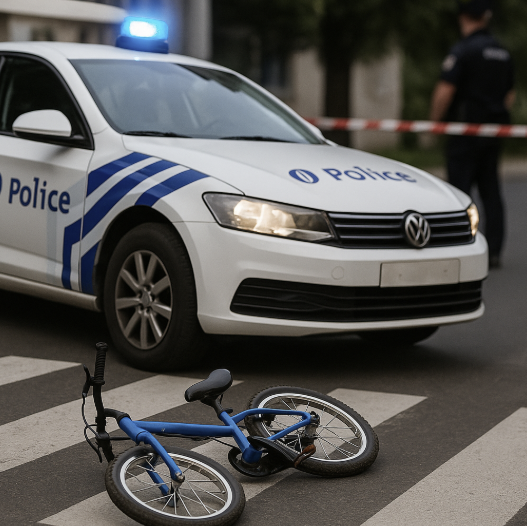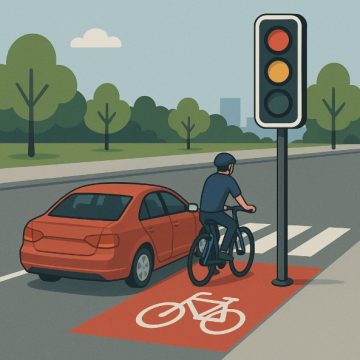A Child Killed by a Police Vehicle in Antwerp: How Far Does the Right to Urgency Go?
🕯️ A Tragedy That Raises Legal Questions
On Wednesday, 18 June 2025, tragedy struck the city of Antwerp: a 9-year-old child was fatally struck by a police vehicle on urgent duty, near a school on Provinciestraat.
The police vehicle was reportedly operating with activated sirens and blue lights. The 25-year-old officer driving was immediately tested for alcohol and drugs (both negative), and an investigation was launched under the authority of the Comité P, assisted by a traffic expert.
Beyond the emotional shock, this case raises a fundamental legal question: what are the limits of the legal right to urgency?
🚨 Priority Vehicles in Belgium: What Does the Law Say?
Under Belgian law, priority vehicles (police, fire services, ambulances, customs inspectors, etc.) are governed by Article 37 of the Highway Code. Two cumulative conditions must be met for a vehicle to be considered “priority”:
-
The vehicle must belong to a recognized emergency service.
-
It must be using both a blue flashing light and a two-tone siren simultaneously.
⚠️ Without both activated, the vehicle has no special priority under the law.
🛑 A Conditional Priority: Exceptional Rights with Clear Limits
When a vehicle is correctly signaled as “priority,” it may:
-
Run red lights,
-
Exceed speed limits,
-
Drive against traffic or enter prohibited areas.
But these rights are not absolute. The driver remains bound by Article 37.4, which states that these exemptions only apply insofar as they do not endanger other road users unnecessarily.
In short, the law provides exceptional rights, balanced by a heightened duty of care.
👶 The Child, the Road, the Law: Applying It to the Antwerp Case
In the Antwerp case:
-
The vehicle was properly operating as a priority vehicle (blue lights + siren),
-
It was driving in a sensitive area, near a school, during a busy morning period,
-
The child, reportedly on a bicycle, was struck near a pedestrian crossing.
Belgian jurisprudence is clear: even when responding to an emergency, drivers must exercise constant vigilance, especially with vulnerable users like children, cyclists, and the elderly.
Excessive speed or poor anticipation may still constitute negligence, even if the vehicle is legally on priority duty.
The investigation by the Comité P and the appointed expert will determine whether speed, visibility, braking distance, or lack of reaction played a causal role.
⚖️ What Are the Legal Consequences?
➤ Civil Liability
-
The Belgian State (as the officer’s employer) may be held liable under Article 1384, §3 of the Civil Code.
-
A personal claim may still be brought against the officer if a serious personal fault is proven (gross negligence, manifest carelessness).
➤ Criminal Liability
-
In case of involuntary manslaughter due to recklessness (Articles 418 et seq. of the Penal Code), the officer could face criminal prosecution.
-
A technical traffic report is key: speed, response time, visibility, and impact trajectory are crucial evidence.
📚 Is Training Adequate for Emergency Drivers?
This tragedy has triggered renewed criticism regarding the lack of practical training provided to police officers for driving under emergency conditions.
Anthony Turra of the CSC Police union stated that “only a handful of officers are truly trained for high-stress driving scenarios.”
Yet, the Highway Code gives significant legal latitude to priority drivers—without requiring advanced driver training or real-life simulations.
This is a legal and operational gap that can have fatal consequences.
🔄 A Call for Reform
This tragic incident highlights the urgent need to:
-
Strengthen emergency driving training, including real-world scenario training from police academies onward,
-
Clarify legal obligations in high-risk areas (e.g., school zones, pedestrian crossings),
-
Establish a national protocol for emergency driving (clear rules on maximum speeds, restricted zones),
-
Facilitate victim compensation, ensuring fair, timely, and compassionate procedures.
🧩 Conclusion: Urgency Cannot Come at the Cost of a Life
The right to urgency is real, but it does not override the duty of care.
Belgian law is built on a delicate balance: enabling emergency response without sacrificing public safety.
When a child dies during an operation meant to protect others, our legal, ethical, and human safeguards must be reexamined.
💬 Are You Affected?
Are you a victim, an involved officer, or a public sector stakeholder?
I can help you navigate issues of liability, legal defense, and responsible protocols for safer emergency interventions.
👉 Contact me for a confidential initial consultation.




